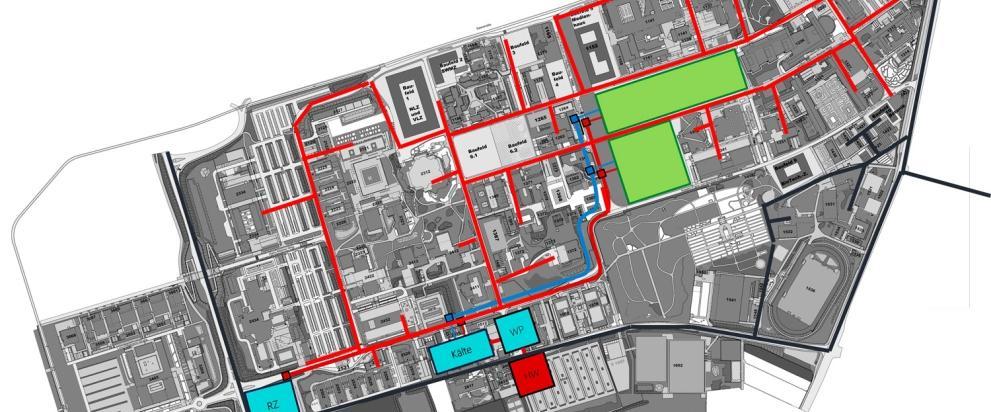Johannes Gutenberg University Mainz
Campus with four new buildings – a boost for the heat transition at
district level
Johannes Gutenberg University Mainz is expanding – with new buildings for pharmacy, geosciences, media research and the university library. At the same time, the campus's energy infrastructure is undergoing changes: existing local heating and cooling systems, a new central cooling plant and a data centre with a maximum electrical connection capacity of 4 MW form the basis for a reorientation of the heating system.
The focus was on how the waste heat from the data centre and cooling plant – combined with the potential of near-surface geothermal energy – could be used to provide a largely decarbonised heat supply for the new buildings. We also examined whether and how these heat sources could be integrated into the existing heating network, which currently provides 56 GWh/a.
Variants with effect
Based on energy simulations of the new buildings, we determined the expected energy requirements, followed by a potential analysis to systematically identify possible heat sources and supply strategies. The focus was on two system variants: the construction of a new low-temperature network and a cold local heating network.
Optimised, simulated – and confirmed
In close consultation with the client, MorgenGrün developed specific supply concepts based on these data supply scenarios and then refined them through simulations and mathematical optimisation.
The economic and ecological comparison of alternatives confirmed the added value: in particular, the use of waste heat from the data centre to supply heat to the new buildings proved to be a sensible solution. In addition, our team identified the feed-in of excess waste heat into the existing heating network via a high-temperature heat pump as a valuable component.
Systemic rather than singular thinking
The challenge lay in intelligently linking different temperature levels at heat sources and consumers – a complexity that was systematically overcome. The result is a scalable supply concept with a high degree of technical and economic rigour.
We are convinced that the course has been set for a sustainable, low-emission campus supply system – and implementation is within reach.
